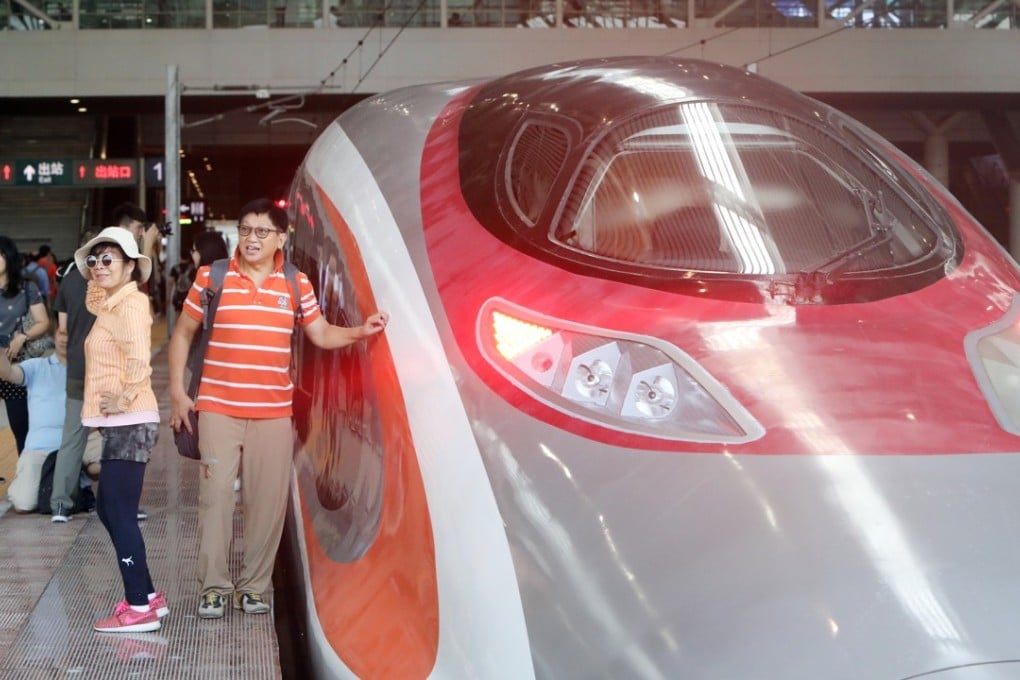Sudden halt and power cut hit debut-day high-speed train from Shenzhen to Hong Kong
Good reviews for historic 19-minute journey to neighbouring city, but travellers report border checks slower than expected

A sudden halt and power failure on a train to Hong Kong was one of many debut-day blips for the city’s new high-speed rail line.
And while the first high-speed passenger service from West Kowloon to Shenzhen North on Sunday provided a smooth ride, passengers had mixed feelings about organisation at the station.
Fuxing Express train G6507 came to an unexpected stop between Shenzhen and Hong Kong. It had earlier come from Guangzhou South station.
It pulled up suddenly at about 11.21am – 19 minutes after its departure from Shenzhen – and sat in the darkness of a tunnel for eight minutes. The air conditioners, some lights, and the electrical seats had no power.
The halt was so fast that passengers felt uncomfortable and some young children started to cry.
There was no announcement or explanation from the captain or cabin crew, though staff were seen walking hastily to and from the driver’s cabin. Asked what had happened and where the train was after power resumed at about 11.29am, a captain said he had to wait for a report from the driver.
The train arrived at West Kowloon at 11.36am, about 15 minutes behind schedule.